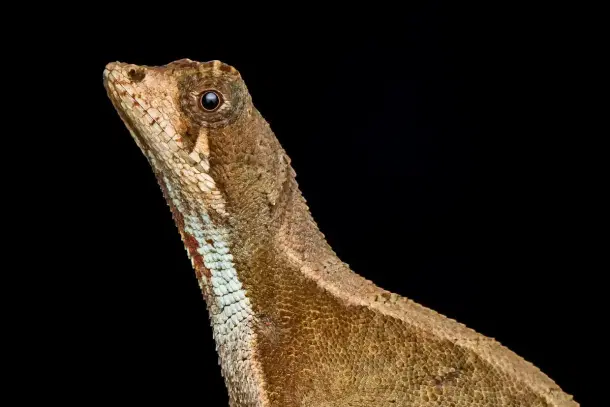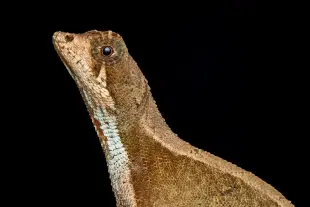News Brief
Here's All You Need To Know About The New Kangaroo Lizard Species Discovered In India's Western Ghats
Nayan Dwivedi
Feb 20, 2024, 10:47 AM | Updated 10:47 AM IST
Save & read from anywhere!
Bookmark stories for easy access on any device or the Swarajya app.


In what could be described as a stroke of luck, researchers have unearthed a new species of miniature lizard in the biodiverse forests of the Western Ghats, describing it as a "diminutive dragon."
The Agasthyagama edge or the northern kangaroo lizard belongs to the Agamidae family and has a maximum snout-vent length of merely 4.3 cm.
The species was uncovered by a team of scientists from various institutions in India and abroad during their exploration in the southern Western Ghats at Kulamavu in Idukki.
Notably, this find marks the second species within the Agasthyagama genus, following the Indian kangaroo lizard (A. beddomii) previously reported from the Sivagiri hills in Tamil Nadu.
Characterised by a reduced fifth toe, these lizards are inefficient climbers and primarily inhabit terrestrial environments with dense leaf litter cover.
The tiny reptiles had a noticeably distinct streak of red and gold color surrounded by blue scales along their throat that wasn’t common in other known species.
The rest of their bodies are more monotone, with males exhibiting a tannish body with a pink stripe along its back and a bright orange patch on its tail. Females are more red in color, but with tiny, black dots on its spine.
Unlike their arboreal counterparts, they scurry swiftly on the ground and seek refuge amid dry leaves to evade predators while preying on small insects.
Published in the scientific journal Vertebrate Zoology by the Senckenberg Museum in Germany, the discovery sheds light on the lizard's distinct morphological and genetic features.
Lead author Sandeep Das, a national postdoctoral fellow at Calicut University, recounts the species' initial sighting during an expedition in search of the elusive Mahabali frog or purple frog around 2015.
Initially mistaken for A. beddomii, subsequent observations hinted at the presence of a new species.
Researchers think the animal may have been seen by locals for centuries, but never properly documented by scientists simply due to a lack of “comprehensive and focused sampling in some areas of the Western Ghats.”
Nayan Dwivedi is Staff Writer at Swarajya.





